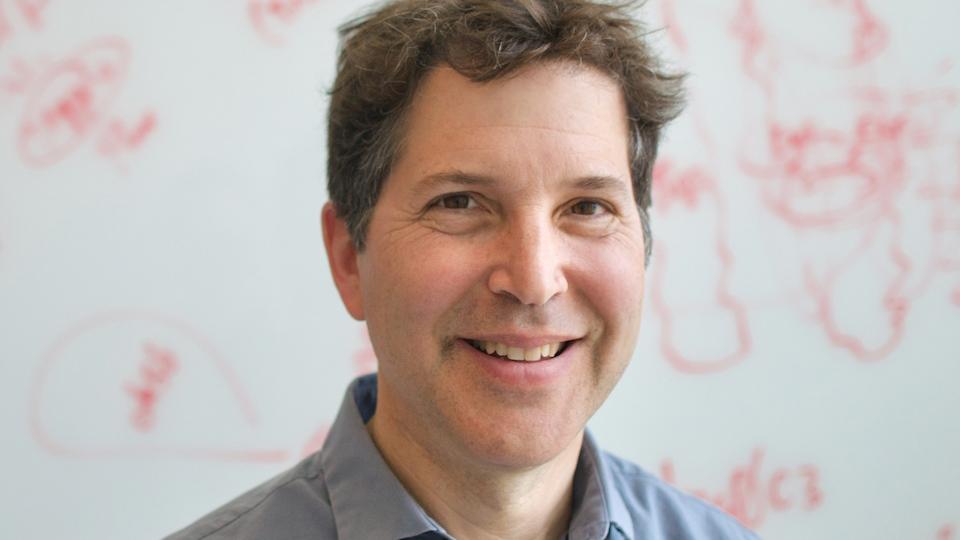Rare disease research: the current and future state

Wendy White, Siren Interactive, interviews Pat Furlong, PPMD
In the fifth and final article by Siren Interactive to coincide with our rare disease focus month, Siren’s founder and president interviewed Pat Furlong about rare disease research. Today also marks Rare Disease Day, which aims to provide further awareness and support for rare disease patients around the world.
(Continued from "Rare disease pricing – is it sustainable?")
It is estimated that 95 percent of rare diseases do not have an FDA approved therapy. As a result, research is central to any conversation about rare disorders. And orphan drugs often establish the border — the edge of the latest medical advancements resulting from significant financial investment, targeted research and relentless patient advocacy.
In this interview, Wendy White, founder &, president of Siren Interactive, talks with Pat Furlong about rare disease research. Pat is the founding president and CEO of Parent Project Muscular Dystrophy (PPMD), the largest non-profit organization in the United States solely focused on Duchenne muscular dystrophy (Duchenne). When doctors diagnosed her two sons with Duchenne in 1984, Pat immersed herself, working to understand the pathology of the disorder, the extent of research investment and the mechanisms for optimal care. Currently, there are no FDA approved treatments for Duchenne, however there are several potential therapies in development and currently in clinical trials.
Find out what Pat thinks about rare disease research in the interview summary below.
Interview summary
WW: How does a rare disease patient or caregiver calculate the risk of participating in a clinical trial? Is this different than for other patient populations?
PF: The risk-benefit equation is much different for rare disease. The majority of rare diseases are genetic, 80% are pediatric, and many are progressive and debilitating. All of these cause that equation to be different. There is so much toxicity and morbidity with the diagnosis that the willingness to risk something more is there. With these rare diseases there is unmet medical need — each day these patients are losing something, such as strength, or some symptom is getting worse. The risk tolerance is much higher based on the severity of the disease.
 ,
"The risk-benefit equation is much different for rare disease."
 ,
WW: What do you think the legacy has been from the HIV activists?
PF: If a drug has sufficient safety data and looks like there is a trend toward benefit, we’ll accept that as good. And we know that good isn’t perfect or curative, but let’s get our foot in the door and let’s agree together that good is all right for a first step. The legacy of HIV activists is to ensure that the patient’s voice is heard, that the risk-benefit equation needs to be understood in the context of debilitating, life-limiting conditions and that the FDA should use discretion and apply flexibility. It also means that lives are at stake and doing nothing is doing harm and while we appreciate the importance of maintaining standards, we also believe that the unmet needs of patients deserve more creative regulatory thinking by sponsors and regulators.
WW: Quality of life improvements aren’t necessarily taken into account by the FDA when approving drugs. Why is this important?
PF: I’m hoping that the new requirements to have families and patients at the table with the FDA will encourage them to include quality of life issues as they review data. So many little things improve the quality of life, and we in the patient community need to be able to say to the FDA, it’s not just all about data. Quality of life is not just the impact on the patient, but the ripple effect on the overall quality of life of the family that must be taken into account.
 ,
"I’m hoping that the new requirements to have families and patients at the table with the FDA will encourage them to include quality of life issues as they review data."
 ,
WW: Can you share some of the progress that has been made with the FDA?
PF: I’m familiar with trials that utilized a composite score which included exploratory outcomes. The outcomes were suggested and agreed upon by patients and families. In conditions such as Duchenne, where motor function is limited, it is important to listen to patients, to understand what is important to them, and to find out what would improve their quality of life. For instance, turning over in bed, turning on a light or putting a plug into a socket – they all have the potential to dramatically improve the quality of life. We are thrilled that the legislation PDUFA V/FDASIA means that patients will be included in the review, that what they think and need will have impact and hopefully, that the FDA will consistently apply flexibility within the review process. Thankfully, patients and families will continue to show up at meetings as well as participate in review processes to impress upon the FDA that it’s not just about a number, a P-value, it’s really about something greater than that.
WW: Has the advent of social media had an impact?
PF: I think social media has dramatically changed the field and that we, at this moment, don’t yet know to what extent it will change the world. Websites, such as Change.org, enable individuals to develop a petition about something they care about and use social networking tools, like Facebook or Twitter, to gain friends who will sign a petition. We have petitions about a lot of different things that are raising the voice of frustration, and getting a substantial number of signatures raises the volume of the request and potentially may change how things are done. Clearly, in some instances, change has occurred. Social networking is going to change the level of involvement of every patient because access is open to anyone with a mobile phone or computer. Social networking crosses all cultures, enabling individuals to raise their voices collectively to advocate for change. Companies, governments, patients, their families and the general public are all paying attention. It’s a new world out there and it is going to impact all of us.
 ,
"Social networking crosses all cultures, enabling individuals to raise their voices collectively to advocate for change."
 ,
WW: What do you see in the future for rare diseases?
PF: For me, what warms my heart the most is to see the interest by the biopharmaceutical industry in rare diseases, in believing that they can make a difference and that their commitment has the potential to make a difference in the lifetime of this generation of patients. It is an exciting time for rare disease, full of opportunity and hope. It is time for rare.
About the interviewee:
Pat Furlong is the founding president and CEO of Parent Project Muscular Dystrophy (PPMD), the largest non-profit organization in the United States solely focused on Duchenne muscular dystrophy (Duchenne). Pat is considered one of the foremost authorities on Duchenne in the world. She speaks about Duchenne and related topics at conferences each year internationally and is an active board member with the Genetic Alliance and the Muscular Dystrophy Coordinating Committee, U.S. Department of Health &, Human Services. She is also a committee member on the Collaboration in Education and Test Translation Program, and serves on the data safety monitoring board for both the Rare Diseases Clinical Research Network and Cooperative International Neuromuscular Research Group.
In 2010, Pat was named WebMD’s Health Hero and was featured in The New Yorker as a “World Changer.” She is the recipient of Research! America’s 2008 Gordon and Llura Gund Leadership Award.
About the interviewer:
Wendy White founded Siren Interactive in 1999. Wendy approaches business from her unique perspective of being an entrepreneur and digital marketing expert, as well as being the mother of a daughter with a rare disorder. Wendy’s personal journey with her daughter, which began in 2001, was the impetus for Siren Interactive to focus solely on relationship marketing for rare disorder therapies.
The agency leads the industry in pharmaceutical digital relationship marketing providing value to patients, caregivers and healthcare professionals through relevant online content about therapies that treat chronic, rare disorders. A recipient of the 2011 Manny Heart Award and featured on the Inc. 5000 list of fastest growing privately held companies for the past three years, Siren Interactive is the first and only marketing agency in the United States with dual regulatory compliance certification for Patient Relationship Marketing and Internet Promotion / Social Media.
In 2011, Wendy led the collaboration with 12 fellow rare disease caregivers to co-author Uncommon Challenges, Shared Journeys: Stories of Love, Hope and Community by Rare Disease Caregivers. Wendy serves as a board member for the National Organization for Rare Disorders (NORD), an executive committee board member for the Healthcare Businesswomen’s Association (HBA), and a trustee for the Boys &, Girls Club of the Union League of Chicago. In 2012, she was honored as one of the top 100 most extraordinary leaders in the pharmaceutical industry in the PharmaVOICE 100. Wendy received a bachelor's degree in quantitative business analysis from Indiana University.
For more information, email Wendy at wwhite@sireninteractive.com, or visit http://sireninteractive.com/.
How important is rare disease research?











